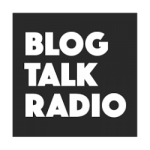In March 2020, Congress passed the Coronavirus Aid, Relief, and Economic Security (CARES) Act, which included several provisions designed to help retirement savers cope with the financial fallout from the pandemic. Among these temporary measures were special rules for required minimum distributions, coronavirus-related distributions, and retirement plan loans. In late June, the IRS released Notices 2020-50 and 2020-51, which clarify many of the details for both retirement plan participants and sponsors. Following are some important details for plan sponsors to consider.
Required minimum distributions (RMDs)
One CARES Act provision allows the suspension of 2020 RMDs from defined contribution plans and IRAs. Plan participants who prefer to forgo RMDs from their accounts, or to withdraw a lower amount than required, may do so. The waiver also applies to account holders who turned 70½ in 2019 and would have had to take their first RMD by April 1, 2020 (unless they actually took their first RMD in 2019), as well as beneficiaries of inherited accounts and those whose required beginning date is April 1, 2021.
For participants who may have taken an RMD before the CARES Act took effect, the IRS has clarified that all 2020 RMDs — even those received as early as January 1 — may be rolled back into a qualified account by August 31, 2020. Moreover, such a rollover would not be subject to the one-rollover-per-year rule.
This ability to undo a 2020 RMD also applies to beneficiaries who would otherwise be ineligible to carry out a rollover. (However, in their case, the money must be rolled back into the original account.)
This provision does not apply to defined benefit plans.
An appendix to IRS Notice 2020-51 includes a sample plan amendment that offers participants and beneficiaries the choice between receiving and not receiving RMDs.
According to the IRS Notice, the sample amendment follows the design of pre-approved plans that utlilize a “basic plan document” and an “adoption agreement.” Employers that don’t use an adoption agreement (such as those with individually designed plans) “should modify the format of the amendment to incorporate the desired options in the terms of the amendment.”
The sample amendment offers two optional defaults if participants or beneficiaries do not make an election with regard to RMDs. The first default states that, in the absence of an election, the plan would “pay out distributions that include 2020 RMDs.” The second option states that the default would “suspend distributions that include 2020 RMDs.” A sponsor must select one of these two options and specify the date when the plan will begin operating according to the new terms.
The amendment also offers plan sponsors three different options for direct rollovers associated with RMDs. (If a sponsor does not choose one of the options, the default is that a direct-rollover option applies only to pre-CARES Act eligible rollover distributons.) The direct rollover options are:
- 2020 RMDs (as defined by the plan)
- 2020 RMDs and extended 2020 RMDs (both as defined by the plan)
- 2020 RMDs (as defined by the plan) but only if paid with an additional amount that is an eligible rollover distribution
The CARES Act allows a plan to operate in accordance with an expected amendment, provided that amendment is adopted no later than the last day of the plan year beginning in 2022 (or 2024 for a governmental plan).
Coronavirus-related withdrawals
Another measure in the CARES Act allows “qualified” retirement plan participants to take one or more plan distributions during the 2020 calendar year totaling no more than $100,000 of their vested balance without having to pay the 10% early-withdrawal penalty (25% for certain SIMPLE IRAs). There is no mandatory tax withholding on these distributions, and qualified individuals can take distributions regardless of actual need.
Participants may choose to spread the income from these coronavirus-related distributions, or CRDs, ratably over a period of three years to help manage the associated income tax liability. They may also recontribute any portion of the distribution that would otherwise qualify for a tax-free rollover to an eligible retirement plan over a three-year period, and the amounts repaid would be treated as a trustee-to-trustee transfer, avoiding tax consequences.1
Amounts can be recontributed at any point during the three-year period, beginning the day after the day of a CRD. Amounts recontributed will not apply to the one-rollover-per-year rule.
Participants will report a coronavirus-related distribution (or distributions) on their federal income tax returns and on Form 8915-E, Qualified 2020 Disaster Retirement Plan Distributions and Repayments. They can also use this form to report any recontributed amounts.










